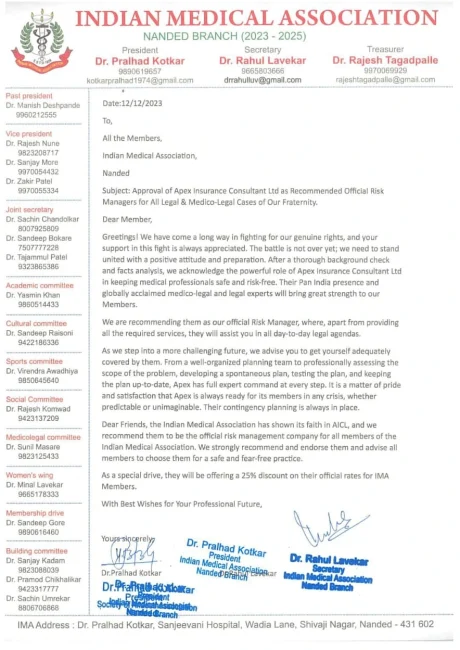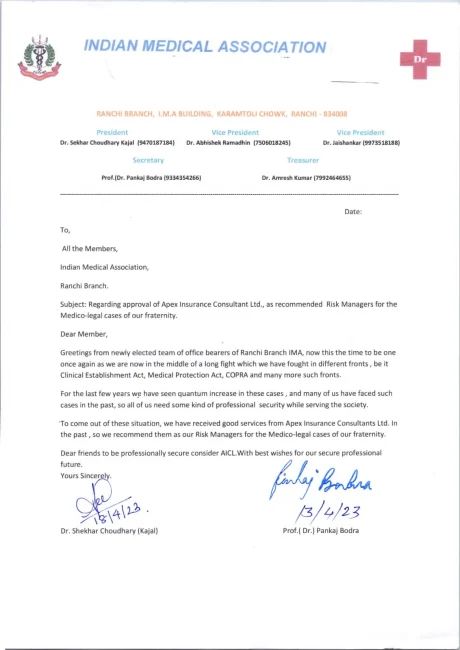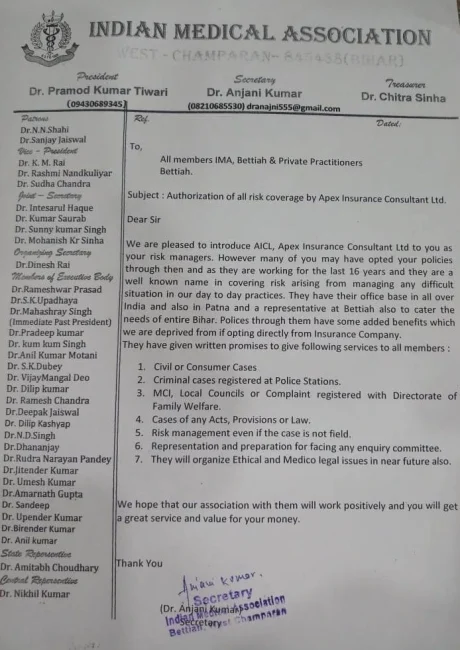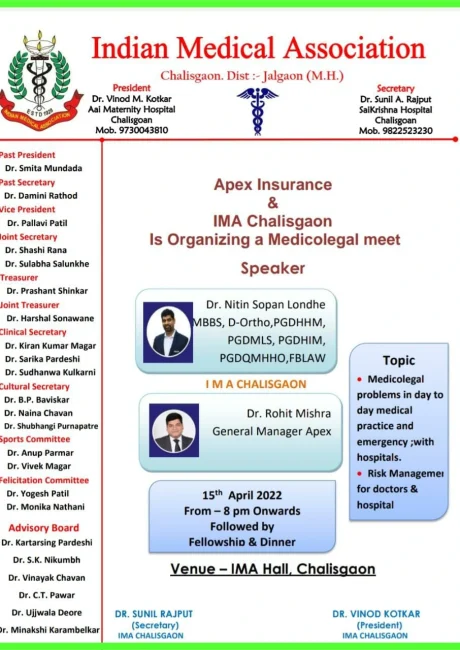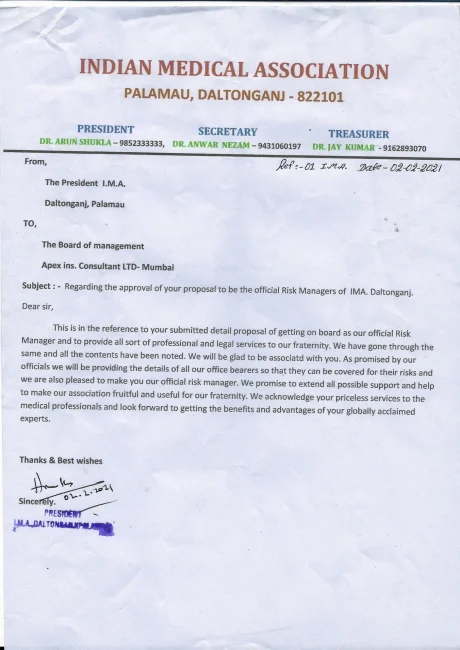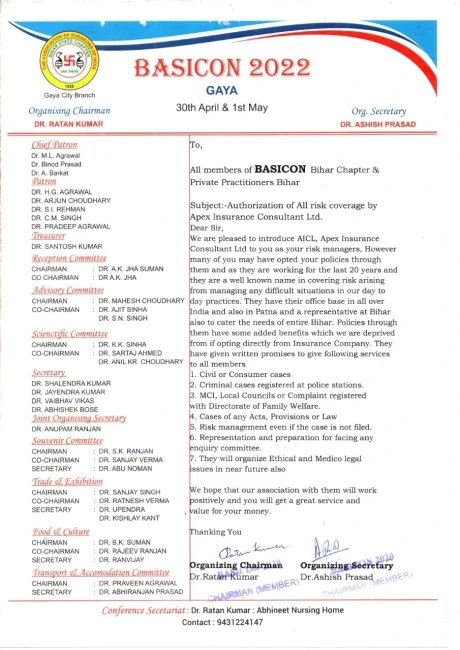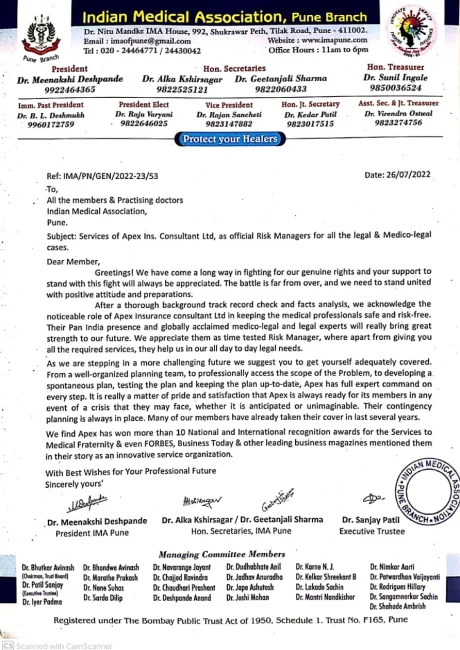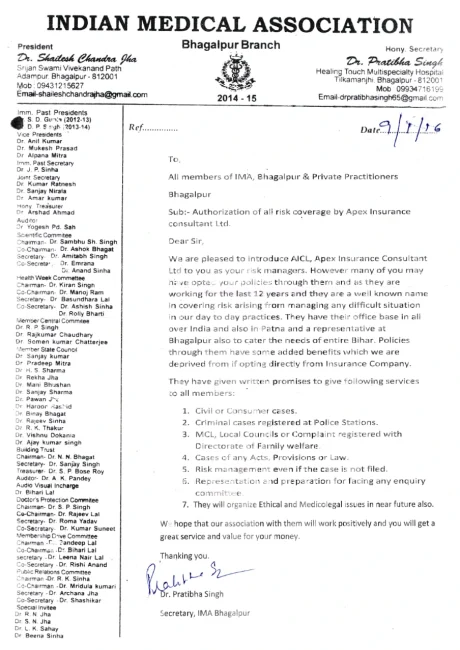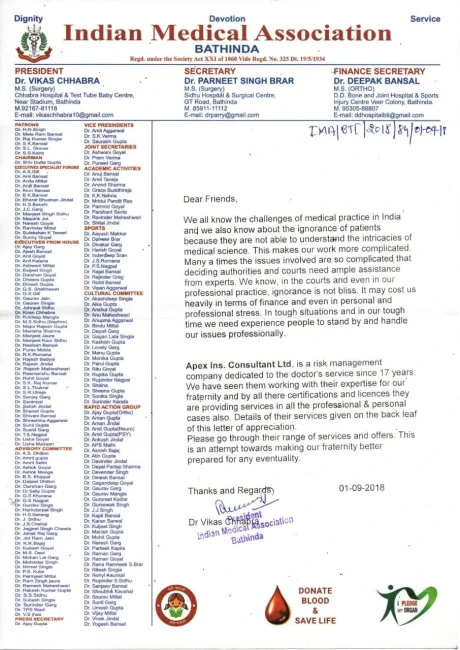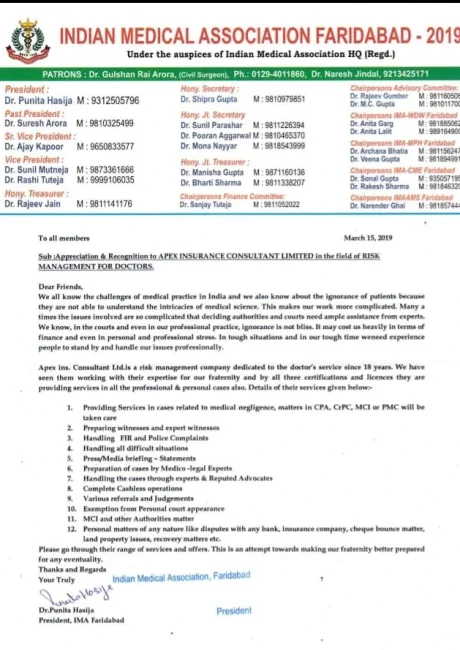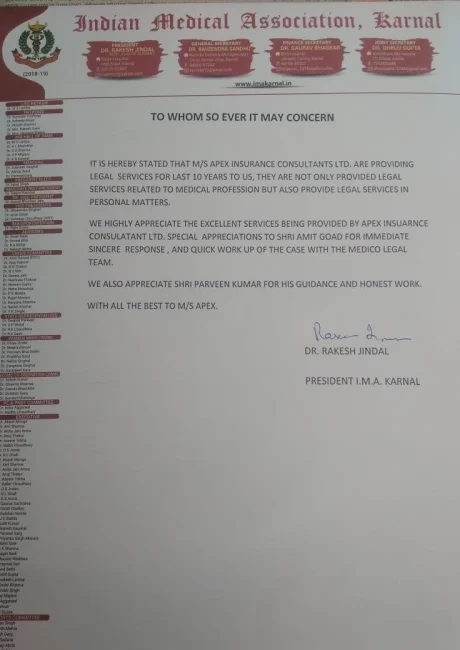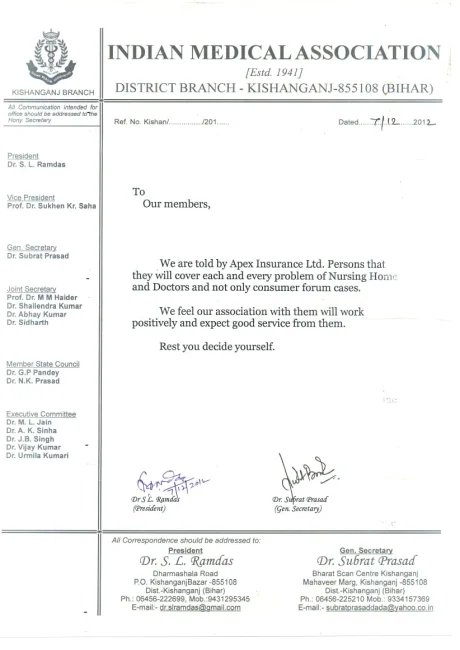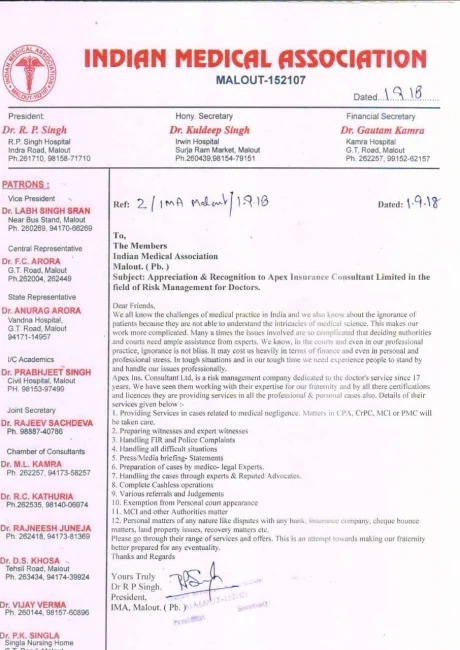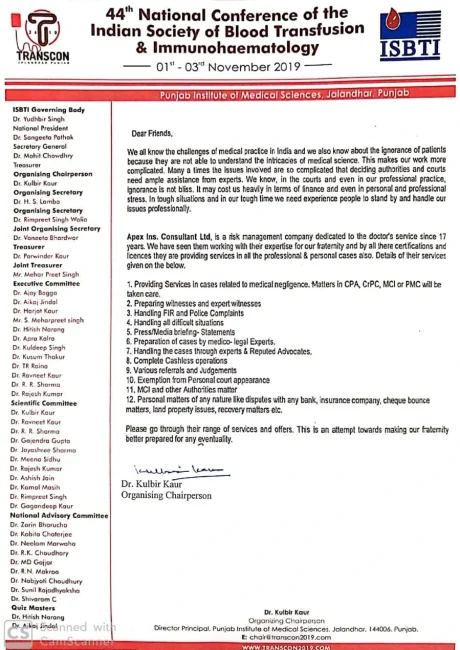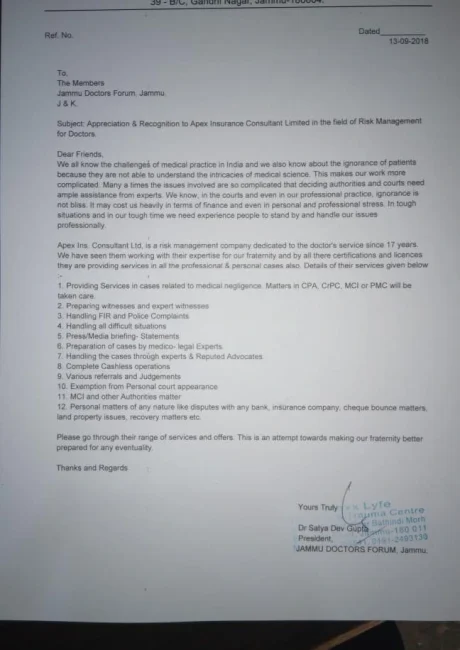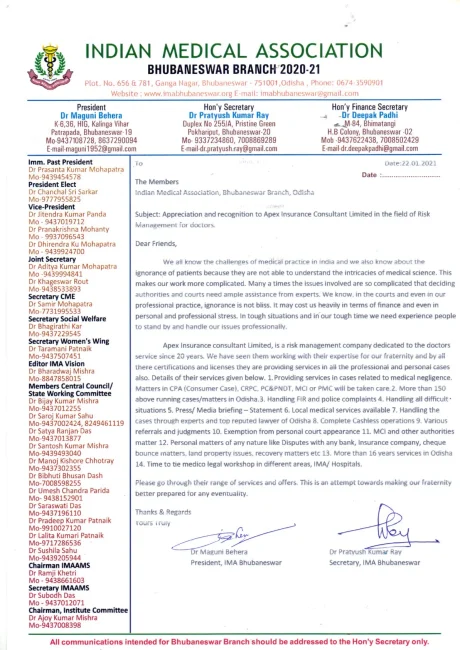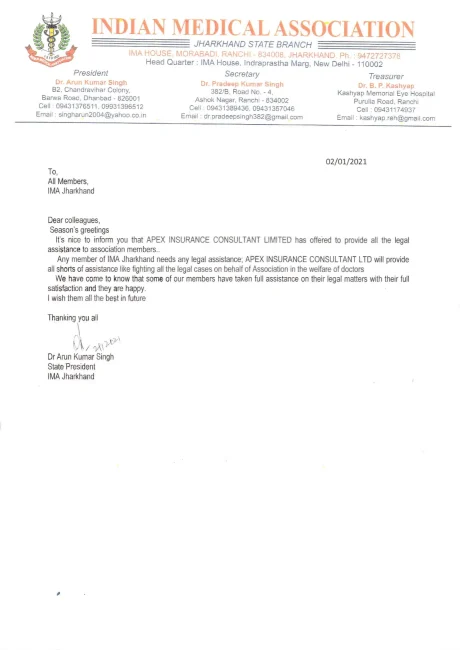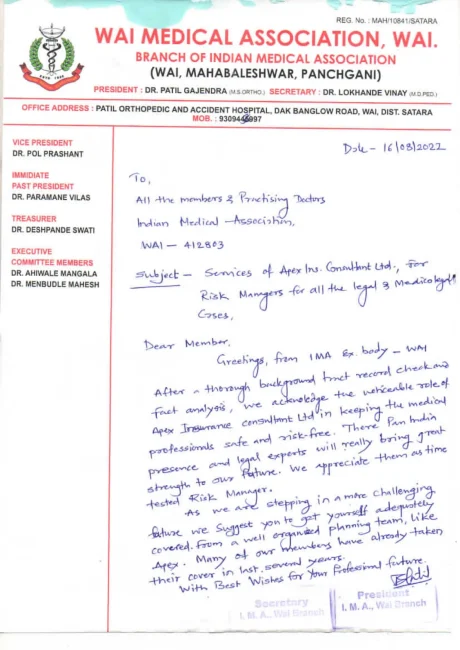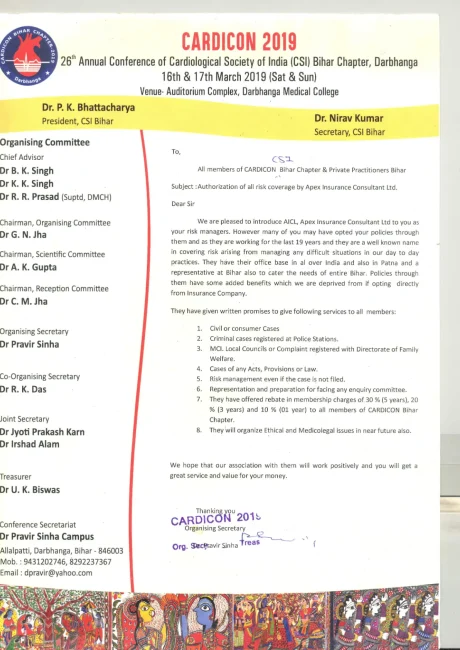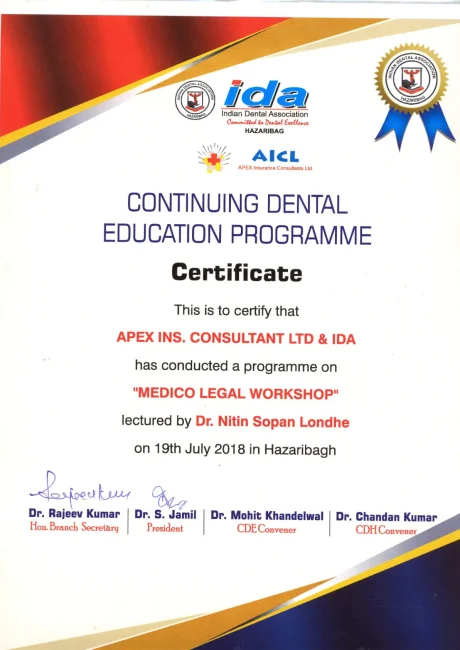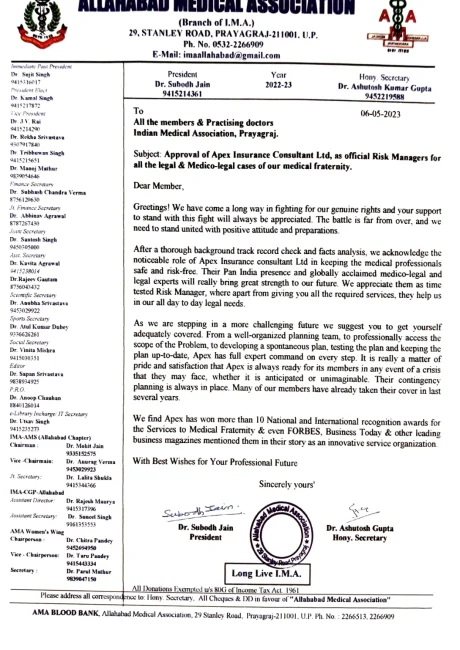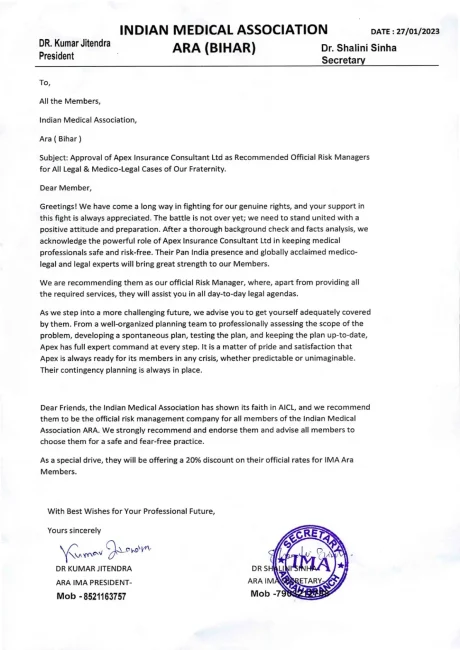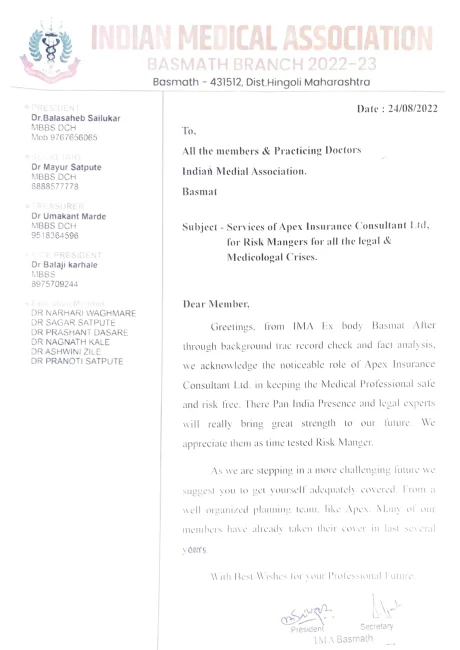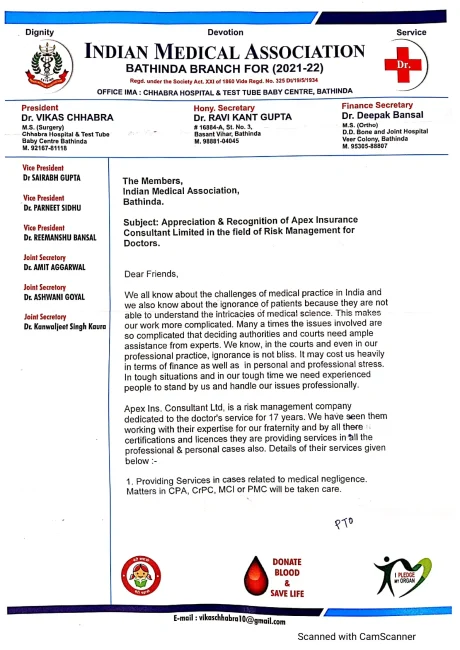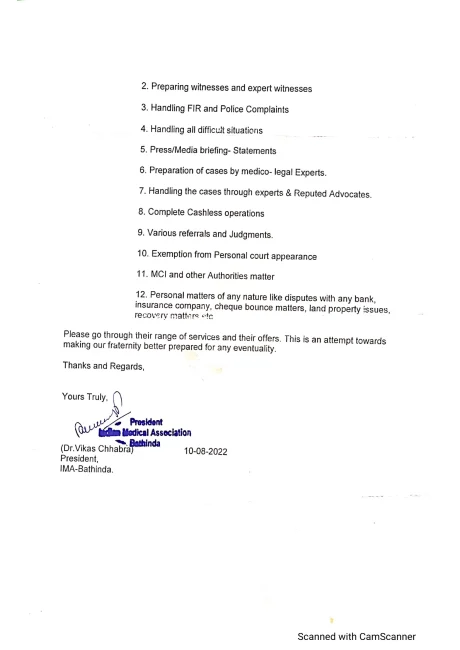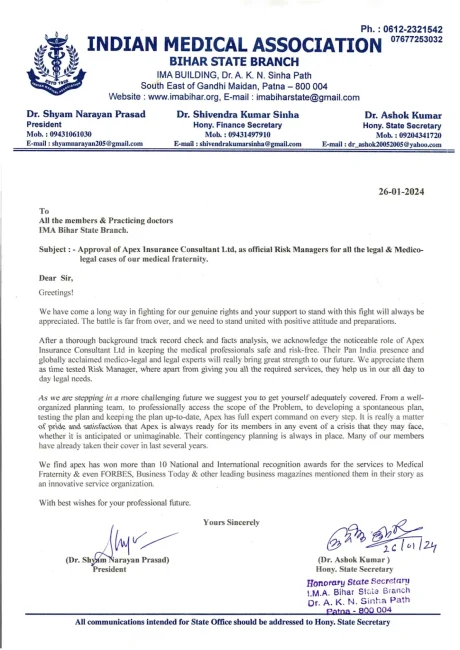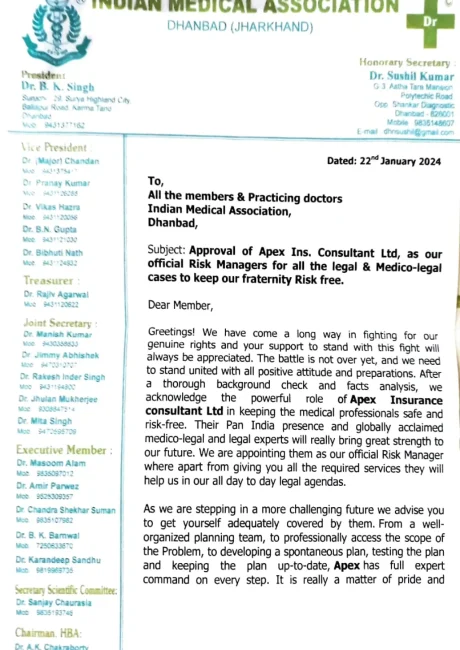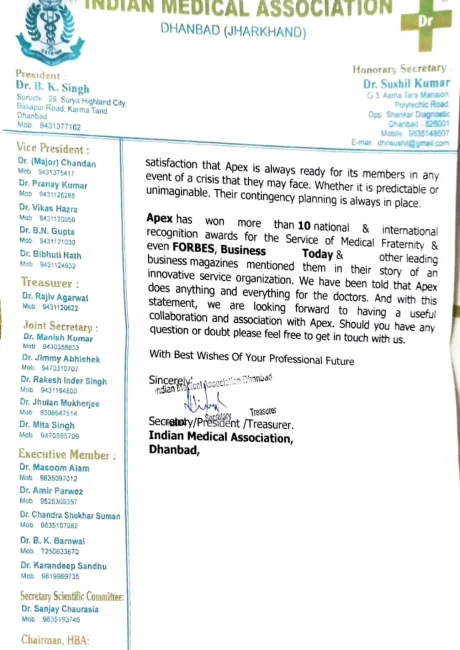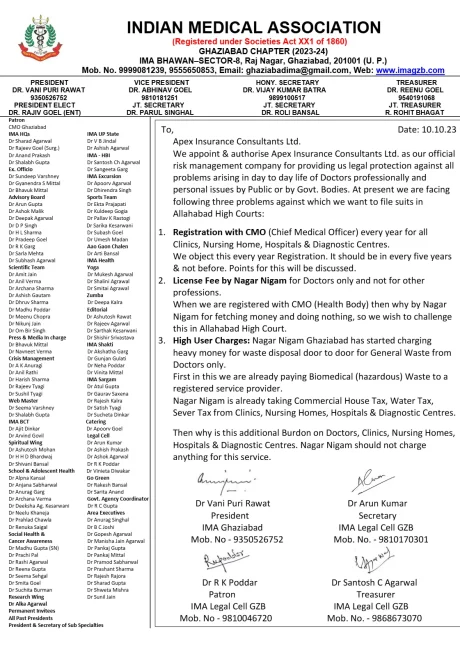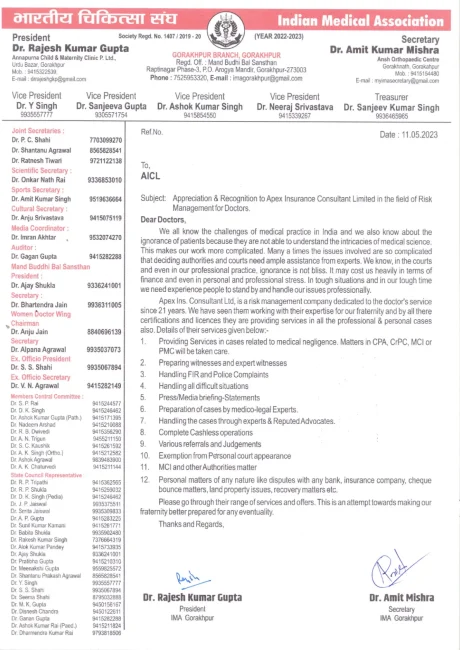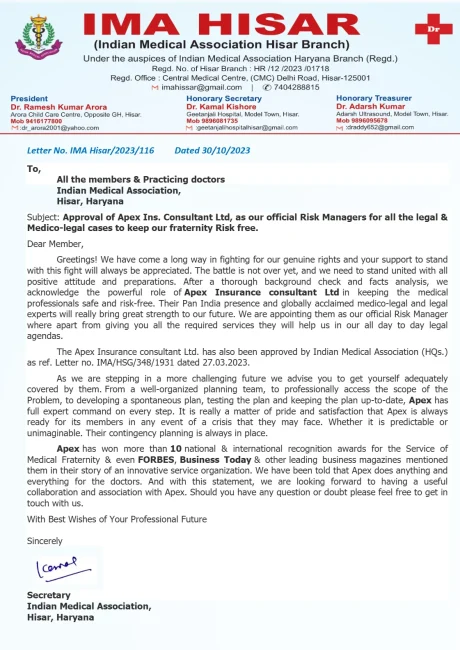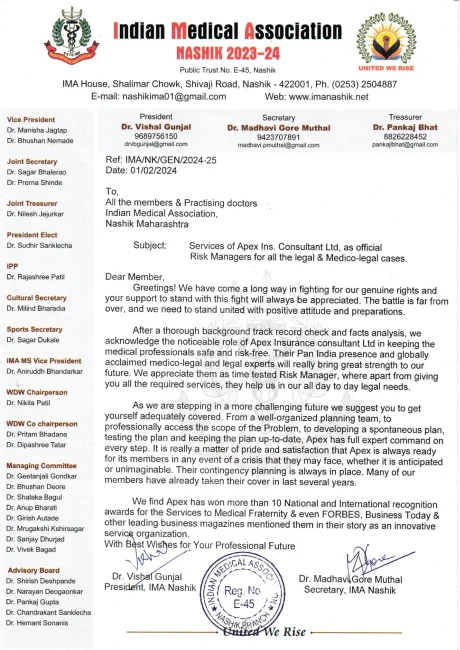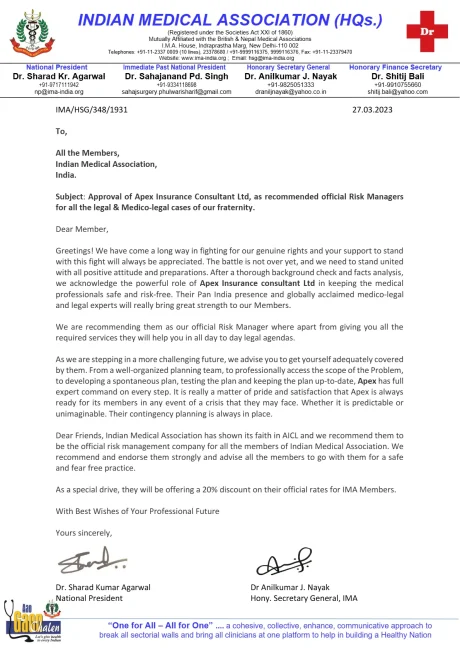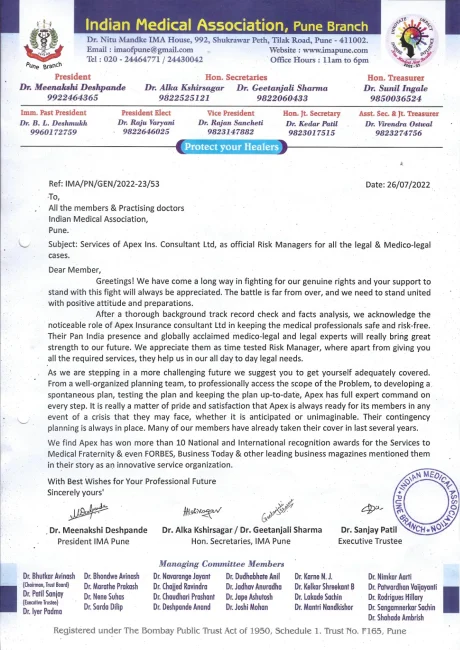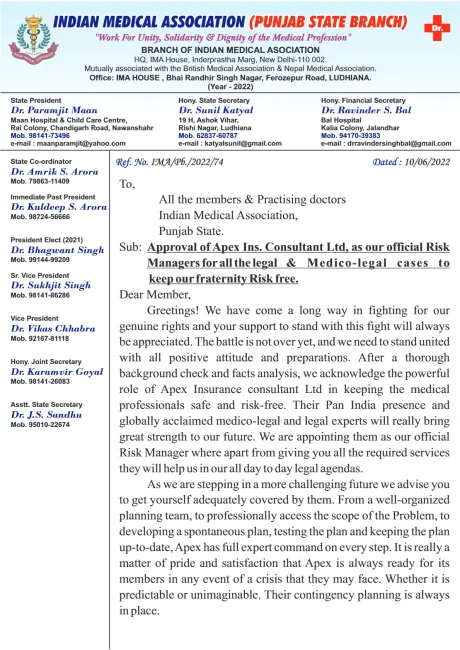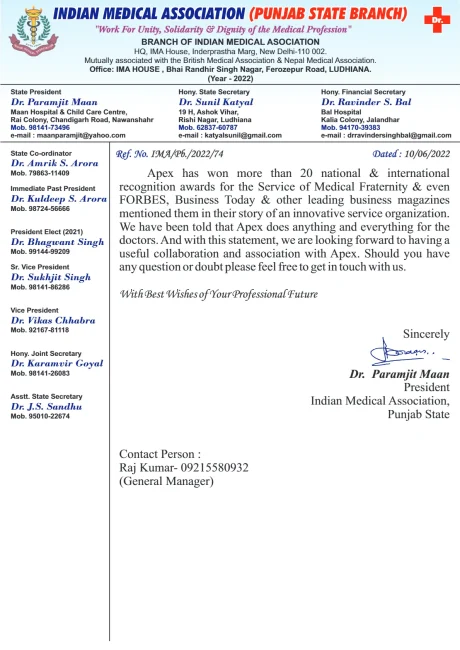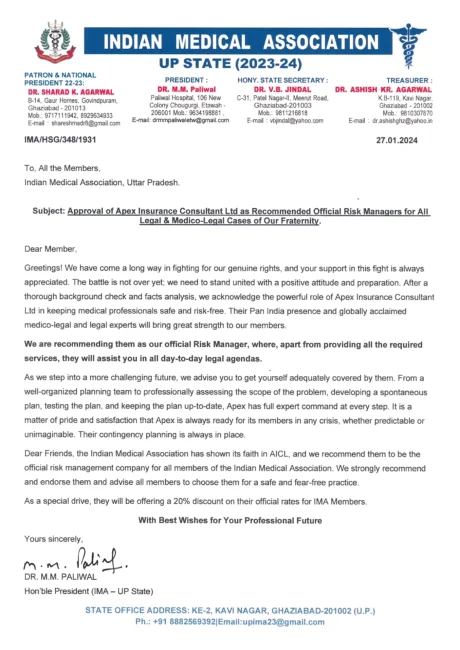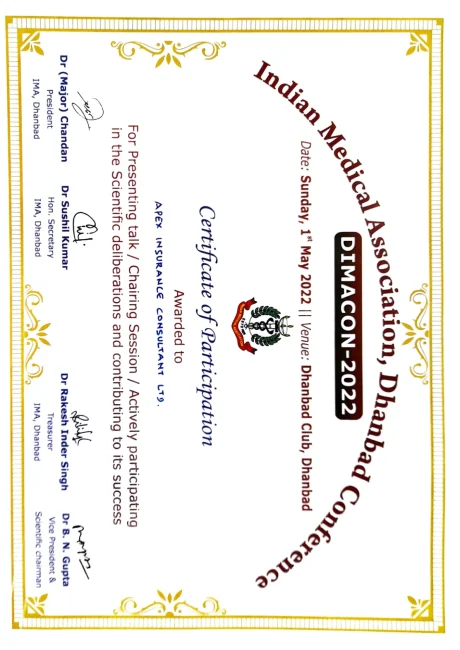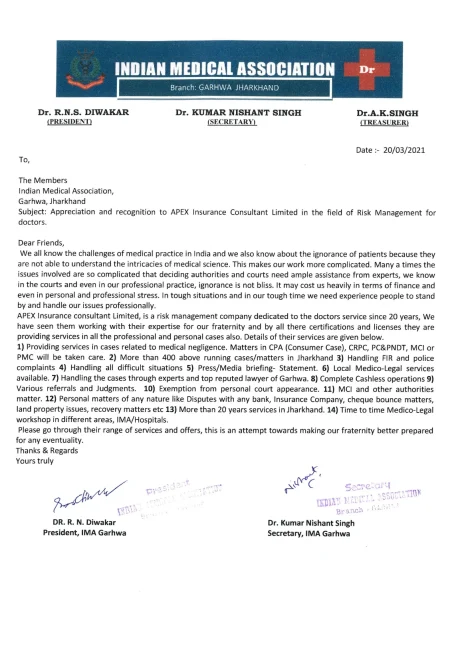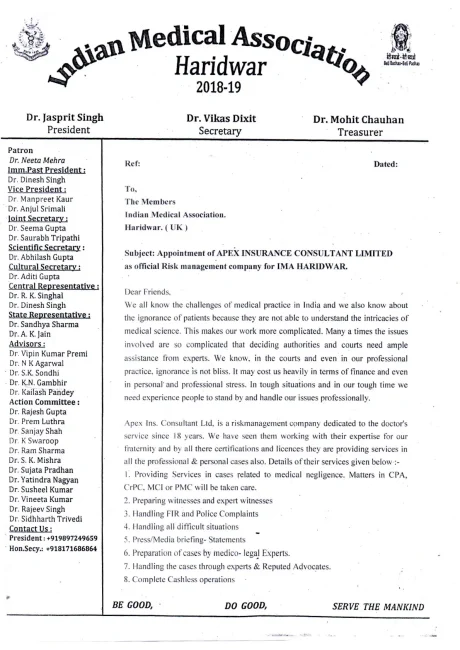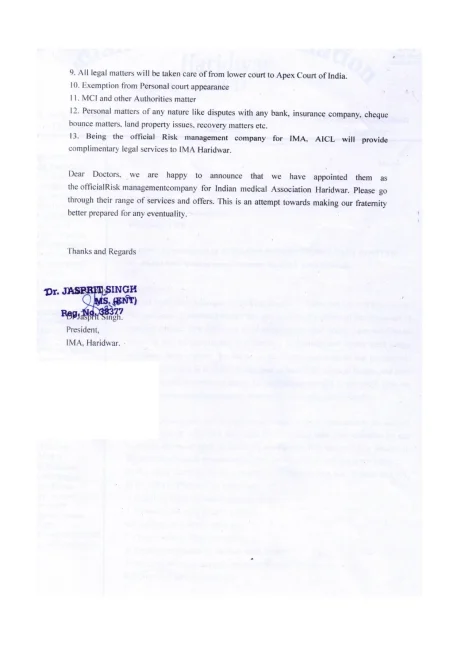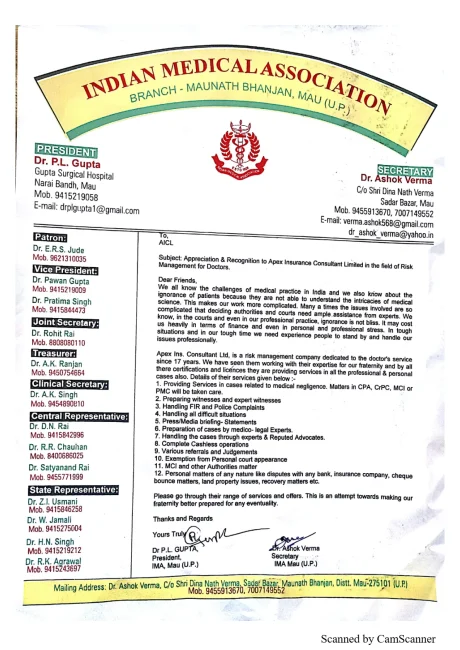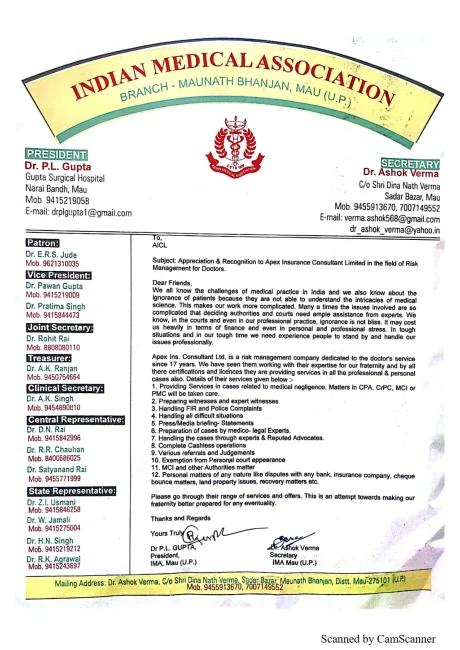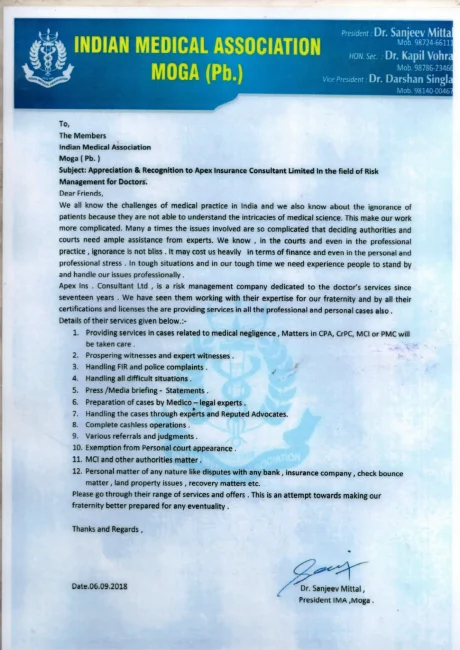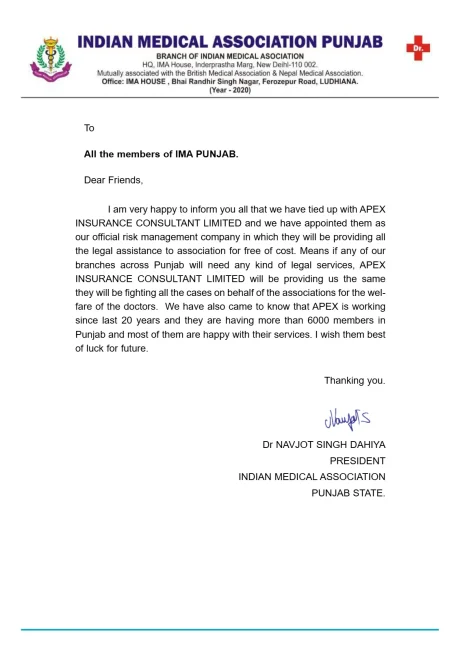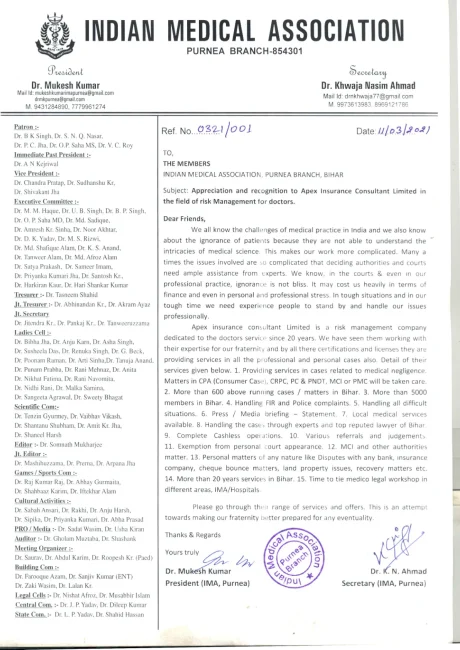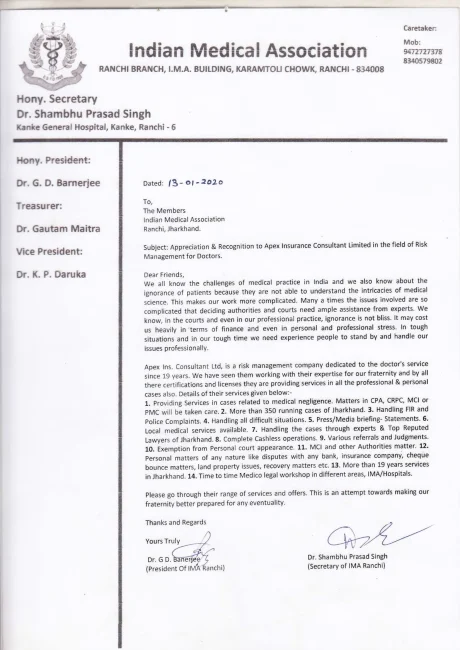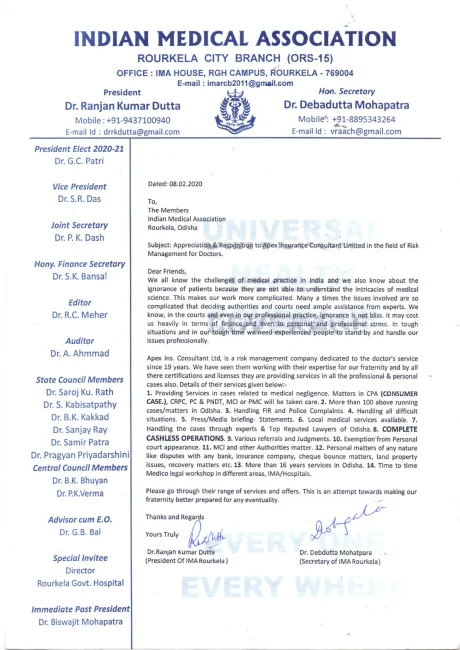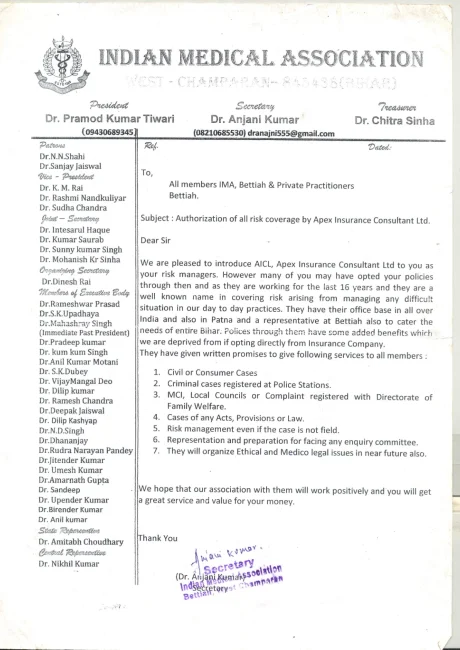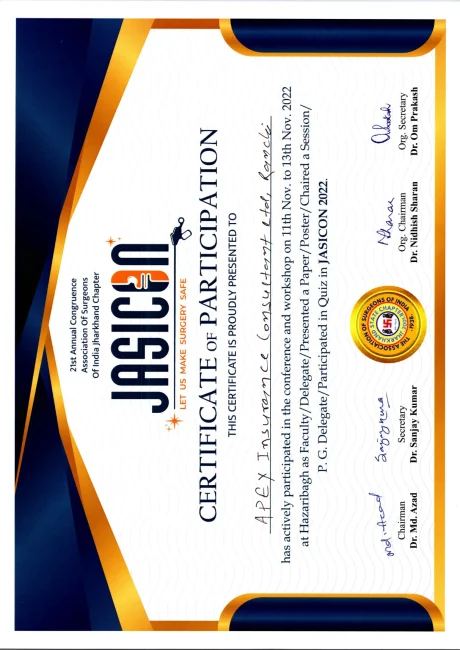Dr. (Prof.) Mahesh Baldwa,
M.D,D.C.H, FIAP
MBA, LL.B,LL.M , Ph. D(law)
SENIOR PEDIATRICIAN & MEDICOLEGAL ADVISOR
Formerly Assistant Professor of Pediatrics at T.N. Medical College and Nair Hospital, Mumbai-400008
Ex. Asst. Professor JJ Hosp, Grant medical college
Professor, paper setter & examiner of law to postgraduate students of University Department of Law, University of Mumbai
Baldwa Hospital, Sumer Nagar,S.V. Road,
Borivali (West)Mumbai 400 092
Cell 09322990138
Key Words
Medico-legal (ML)
medical negligence (MN)
critical care (CC)
emergency treatment (ET)
neonatal / premature intensive care units (NICU)
pediatric intensive care units (PICU)
Indian penal Code (IPC)
Consumer protection Act-1986(CPA)
Introduction
It is rather impossible to find a medical professional who would say that they never faced a medico-legal (ML) situation called “Difficult situation of unexpected death” and world at large gazing in their face as if they were responsible for death. This type of scenario where treating team of doctor is made to feel guilty about difficult situation of unexpected death by relatives is not uncommon. A spectrum of ML reactions from patient party affecting medical professional may be (a) sometimes in the event of unexpected death occurring in front of lot of accompanying relatives then at slightest provocation they may take law in their own hands and bash doctors and other staff members along with destroying medical equipment & hospital property. (b) Some other times, no sooner than expected instead relatives asking you explanations about unexpected death, you have a policemen coming to make ML questioning to you and your staff as to what happened to deceased child as they have received a ML complaint from relatives. (c) So often in the event of difficult situation of unexpected death, you may receive a politicians telephone to resolve the issue amicably or some social worker actually walking in your office to pay for unexpected death or a local goon threatening you to cough up money immediately for unexpected death without asking your explanation (d) So often in the event of difficult situation of unexpected death, you may find media and press people gathering around you & your staff members to speak details of difficult situation of unexpected death, which are flashed in defamatory way on TV or newspapers leaving you disgusted. (e) In the event of unexpected death, you should feel lucky and blessed if police does not walk to make inquiry about difficult situation created by unexpected death but so often your comfort is disturbed weeks later or sometimes months later by a lawyers notice probing in situation of unexpected death and asking for case papers related to medical treatment of deceased along with compensation. (f) As per the media projection[i] one out of ten doctors are receiving dragged in unnecessary prosecutions for medical negligence (MN). Court summons for situation of unexpected death and complains narrating absurd allegations and asking astronomical sum of money as compensation is going to be on rise coming days.
It is surprisingly true that inspite of wearing good, empathetic, sympathetic attitude & observing courteousness in communications allegations of MN in difficult situation of unexpected death may put medical professional in a ML maze of alleged MN and leave them disgusted. Medical professionals feel they are framed in alleged MN even though there is no ML issue in unexpected death. A new breed of legal advisors in ML issues of MN on internet are on rise who lure relatives confronting unexpected death and show them big money in prosecuting doctor which cannot be traded off by medical professional wearing good, empathetic, sympathetic attitude & observing courteousness in communications in event of difficult situation of unexpected death. Ultimate answer lies in insuring oneself for professional work with insurance companies. This article is designed to reduce the trauma accompanied with alleged MN in difficult situation of unexpected death, where there is no MN of doctor. Some knowledge of ML aspects of difficult situation of unexpected death may sharpen your record keeping skills and also communication skills while dealing with relatives, police, and politician or for that matter a goon walking in your office.
WHY ML PROBLEMS ARE ON RISE IN DIFFICULT SITUATION OF UNEXPECTED DEATH PEDIATRICS:
As such two decades ago a difficult situation of unexpected death in a nursing home or hospital would not invite much hue and cry. Ever since branch of pediatrics has matured & ushered in new era of critical care (CC) and emergency treatment (ET) with advent of better patient monitoring facilities and advancement in knowledge and skills CC & ET. A number of small to big tertiary care centers in the form of neonatal / premature intensive care units (NICU), pediatric intensive care units (PICU) with huge investment in infrastructure have come up, even in small towns and talukas apart from big cities in India. State of art infrastructure costs a fortune and escalates cost of quality care in pediatric treatment. Understanding ML mindset of courts in case of unexpected death in alleged MN
In today’s scenario[ii] medical professional s are assuming role of health risk managers of ill child patients. So often children are prone to get in to acute crisis for various reasons. Law differentiates between what was the original disease, which pushed the child in to acute crisis. Law also probes in, why original disease pushed child in to acuter crisis. Law finds out whether it was it lack of treatment or delay in treatment, which pushed the child in to acute crisis or as such nature of disease was such that it galloped its way to acute crisis leaving no time for medical professional to treat it. Law also finds out who was responsible for delay in treatment or for lack of treatment pushing child in acute crisis. Sometimes under treatment and apparently well child is pushed in acute crisis due to anaphylaxis caused by a drug. Sometimes post surgical complication of internal bleeding or severe sepsis puts the child in to crisis. In the event of unexpected death, such situations if there is alleged MN and it comes up for hearing in the law courts then courts find out after developing of complication what remedial measures were taken in the interest of patient. Was patient referred to proper specialist and proper medical care was made available to child in acute crisis as soon as possible. Medical professional should keep this in mindset of courts and accordingly doctors should be careful enough to reflect this mind set in case paper writings. Case paper writings showing abovementioned details as required by courts are helpful in pleading and proving no MN of doctors in courts. Any action or inaction (act of omission or commission) of medical professional accelerates or increases the health risks of a critically ill patient may result in an allegation of breach of duty of medical professional[iii]. Amount of money asked is mind-boggling[iv]. Patients may sue a medical professional for compensation by asking usually lakhs of rupees and sometimes in crores[v].
Making relatives of patient party understand DIFFICULT SITUATION OF UNEXPECTED DEATH:
ML problems related to difficult situation of unexpected death in children has become commonplace with the advent of better patient monitoring facilities and advancement in knowledge in maintaining vital parameters till basic pathology causing havoc in critically ill child is managed of by appropriate specific treatment. Doctors perspective in treating fervently acute conditions causing destabilization of vitals and not so vigorously addressing basic pathology in tandem creates confusion in the minds of relatives of patient. So often just monitoring and maintaining vitals cost a fortune, where as relatives perceive as if specific treatment for basic disease was going on. e.g. Septicemia due to a large abscess destabilizing vitals where abscess is not drained because of unstable vitals withstanding anesthesia. Sometimes vitals remain unstable and original disease pathology dominates so much that it reaches to point of no return and child develops unexpected death. This misunderstanding of relatives in not able to differentiate between maintaining vitals by monitoring costs are different from medical treatment cost for treating basic pathology. So often difficult situation of unexpected death occurs causing confusion of relatives as to what needed to be done by doctor was not done and doctor wasted time in monitoring vitals and did nothing for basic disease. This mix up of laymen thinking & loose talk by hospital staff gets jumbled up with misunderstanding and misinterpretation of unpalatable scientific explanations given by treating doctor regarding treatment of basic disease and CC & ET for maintaining vitals pave its way to ML cases. Even though CC & ET has significantly advanced in field of pediatrics, which has saved unsalvageable, lives but ushered every one of us in high cost treatment arena. High cost of critical care most often results in cure but when it leads to difficult situation of unexpected death, as outcome then it becomes source of ML problems. It is not uncommon to see or hear or read in news papers that relatives took law in their own hand e.g. Sinhania Hospital Thane was turned to ashes due to difficult situation of unexpected death of local shiv sena politician Shri Anant Dighe, It is not true for high profile unexpected death, but also true for common people facing difficult situation of unexpected death culminating in abuse of medical person & their property. We see alleged ML cases being registered as first information report (FIR) under S. 154 of Criminal procedure code (Cr.PC) for difficult situation of unexpected death at local police stations all over the India and police arresting doctors under Section 304 A of Indian penal Code (IPC).This tendency of arresting doctors in difficult situation of unexpected death which is brought under control by supreme court decision of Jacob Mathews versus State of Punjab[vi] Even the forth estate is not much behind in reporting unexpected death in TV, press every day in defamatory way against doctors. Each such news articles shakes medical professional to core, who wishfully thinks, god, let this not happen to me. Let me practice defensively. This has eroded confidence of innovative and motivated dedicated doctors. It is not a good signal.
Already existing S. 304 A of IPC has got a boost in prosecution of doctors by enactment of Consumer protection Act-1986 (CPA) and it has accelerated prosecutions related to alleged ML. Both criminal and civil remedies are on fast tract of judicial remedy in alleged ML cases. Already existing criminal courts along with establishment of consumer courts[vii] has put the cases of alleged MN[viii] on fast tract remedy. There is no limit set by legislature & judiciary for asking of compensation by prosecution for alleged MN cases. Patient party approaching police stations and law courts is better than they taking law in their own hands.
What is the definition of MN in DIFFICULT SITUATION OF UNEXPECTED DEATH:
Heavy cost of CC & ET has made this emerging pediatric subspecialty, a hotspot of prosecution in alleged MN cases. In today’s scenario medical professional s are health risk managers of the critically sick children, who need vigilant monitoring with various gadgets and timely treatment to maintain vital parameters to avert any further crisis due to common & foreseeable complications, So corollary is that medical professional s are expected to chart the course of the health of their critically ill patients with minimal health hazards by use of state of art and costly monitoring equipment. Any action or inaction of medical professional in emergency room that accelerates or increases the health risks may result in allegation of breach of duty of medical professional.
Document clinical findings and obtain written consents & dissents
Very often when treatment charts and case papers are reviewed by court, when a case of MN related to unexpected death is heard it finds that so often medical professional s were busy treating acute cardiac failure, acute respiratory distress, acute renal failure, acute liver failure, acute severe brain edema and acute shock to maintain life. Court finds and points out that causative disease took a back seat while vigorous treatment for acute crisis was going on. So along with treatment of acute crisis clinical notes also write notes related to basic pathology being treated on day-to-day basis and it should be reflected in clinical notes and it should appear as if both acute crisis and basic pathology were being treated with same vigor. Similarly relatives need to be explained about need to monitor and maintain vitals and it does not constitute the treatment of basic pathology. Medical professional should make it abundantly clear to relatives that monitoring vitals is different from treating the original basic disease. High-risk consents, informed consents and dissents need to recorded in wring on case papers and signed by relatives and a witness to allow court to evaluate whether relatives were informed time to time without confusion.
Legal proof of documenting continuous monitoring:
Very often when treatment charts and case papers are reviewed by court, when a case of MN related to unexpected death is heard, it finds that so often medical professional s claim that they did continuous monitoring of patient related to heart rate / pulse, blood pressure, respiratory rate, temperature, oxygen saturation and electrocardiograph but clinical notes of case papers do not reflect any mention of these readings. Case papers do not showing any entry of vital parameters makes court to conclude that monitoring was not done
Legal view regarding diagnosis:
We as doctors view diagnosis with great respect. Making a accurate diagnosis makes a doctor feel as if he has reached to zenith of his mental abilities. Courts are not very serious about accuracy of diagnosis but at the same time are not ready to condone palpably wrong diagnosis. Very often when case papers are reviewed by court, when a case of MN related to unexpected death is heard and so often medical professional s vehemently claim that they made accurate diagnosis so there is no MN on the part of doctor. Even if diagnosis is not accurate but usual conduct of care of patient by doctor is correct then courts take lenient view regarding making errors in diagnosis of main disease. This is because so many diseases present to medical professional with common signs and symptom complexes and medical professional s may make an error of judgement, if the disease presents with rare, atypical signs and symptoms. Medical professional has liberty to choose treatment after arriving at tentative diagnosis. This liberty is related to causative disease and not to acute emergency syndrome management.
Deficiency in attending the patient and conducting a procedure
Very often when treatment charts and case papers are reviewed by court, when a case of MN related to unexpected death is being heard it finds that so often medical professional s did not attend the patient[ix] then courts take very strict view. Courts take very strict view if there is deficiency in procedure of putting intravenous lines, intra gastric tubes, urine catheters, and tracheal intubation. Courts take very strict view if there is deficiency in continuous monitoring system readings related to pulse/ heart rate, blood pressure, respiratory rate, temperature, oxygen saturation and electrocardiograph finding no entry in clinical notes on case papers. Deficiency in procedures or conducts of treatment of acute cardiac failure, acute respiratory distress, acute renal failure, acute liver failure, acute severe brain edema and acute shock or anaphylaxis to maintain life is also taken as gross negligence. If difficult situation of unexpected death occurs due to such breach of duty of medical professional in emergency room then he may have to defend himself from the charges of MN in courts. Since treatment costs are high and results of critically ill sometimes may result in difficult situation of unexpected death so compensations asked by patient litigant are astronomical.
Difficult situation of unexpected death & Insurance:
Medical indemnity insurance policy[x] is the only way out to practice pediatrics and only safe way to practice emergency and critical care pediatrics peacefully even when unexpected death occurs. Looking in to such an unequal & odious medico-legal scenario where risks of litigations shall continue to increase in days to come. Then where lies the answer? Highest level of record keeping and best communication skills may not be too effective to trade off the compensation benefits patient party gets by dragging you in court of law. This is not a corollary or licence for improper record keeping or arrogant communication with patient party. These risks could possibly be managed and if any claim arises it could be paid by buying indemnity cum hospital error and omission policy issued by private and public insurance companies in India.
LIKELY SITUATIONS OF ML IMPORTANCE IN DIFFICULT SITUATION OF UNEXPECTED DEATH REQUIRING INFORMATION TO POLICE
DIFFICULT SITUATION OF UNEXPECTED DEATH in ML cases:
ML situation where one may get patients who mysteriously develop difficult situation of unexpected death either after entry to emergency unit / room / ward or sometimes afterwards. Medical professional should continue to treat patient with meticulous history recording, examination, investigations needed and treatment as per reasonable norms of medical practice. As per ML norms it is mandatory to inform law enforcers and/or legal authorities (Usually it is local police station[xi]). Why? Because medical professional s duty is to receive and treat the ill / critical patient and duty of police[xii] is to find out whether any crime was been committed on child victim/patient for making him/her suffer from problems listed below:
difficult situation of unexpected death happens in Tetanus, gas gangrene, significant burns, head injuries, significant violence[xiii] needing indoor admission, motor vehicular[xiv] and other accidental fractures, accidental falls needing indoor admission, attempted suicides[xv], attempted poisoning, attempted homicide[xvi], Human or animal or snakebite, rape[xvii], minor’s pregnancy and MTP[xviii], battered baby. Insist for post mortem in difficult situation of unexpected death.
Difficult situation of unexpected death in poisoning
DIFFICULT SITUATION OF UNEXPECTED DEATH in case of attempted/ alleged/suicidal/homicidal or accidental poisoning[xix] medical professional is duty bound to preserve specimen stomach wash if it is done as per protocol (usually 100ml or more in a clean glass bottle), blood samples in EDTA and plain bulbs (usually 2ml each), as applicable and feasible and hand it over to police with proper labeling of name, sex, age, time of collection, brief or detailed history as per the direction of police and full treatment record be given. In case of DIFFICULT SITUATION OF UNEXPECTED DEATH due to poisoning insist for post mortem. Law demands consent for post mortem to be obtained from relatives by postmortem performing doctor and not by treating medical professional .
Following are other difficult situations of unexpected death’s which needs to be informed to police:
- difficult situation of unexpected death happening in indoor admitted child falling from cot or in hospital bathroom
- difficult situation of unexpected death happening on operation table or difficult situation of unexpected death in post operative patients
- difficult situation of unexpected death resulting from anaphylaxis due to a drug
- difficult situation of unexpected death due to Steven Johnson syndrome
- difficult situation of unexpected death as a Post procedure event, for example after lumber puncture, liver biopsy and other biopsies.
- difficult situation of unexpected death happening due to internal or incessant external bleeding and disseminated intra vascular coagulation.
- difficult situation of unexpected death during or Post anesthesia
How to tackle situation of difficult situation of unexpected death when it occurs in presence of lot many relatives:
If there are lots many relatives when difficult situation of unexpected death then immediately divide medical professional’s working team in to two parts. One team shall continue “So called” sham treatment in difficult situation of unexpected death till relatives are explained about difficult situation of unexpected death and are satisfied and then only death is declared. Second team tackles the leader amongst relatives about difficult situation of unexpected death by telling that our team of other medical professional s is trying hard. Try and make relatives understand and differentiate between the basic disease leading to acute crisis and explain that monitoring vitals in not treatment but guiding doctors in treating illness and maintaining vital parameters. Medical professional should wear empathetic, sympathetic attitude & observing courteousness in communications while explaining difficult situation of unexpected death to relatives.
What to do before declaring death in difficult situation of unexpected death?
“So called” sham treatment should continue in difficult situation of unexpected death till relatives are completely satisfied and disperse. At the same time see that all documentation of clinical notes is complete. Preserve all empty vials of injection and injection syringes. Collect 10 ml of blood in plain bulb, EDTA bulb and Sugar bulb and label them. This is to meet the allegation of relatives that either a poison or overdose of medicine was given.
When to declare death in difficult situation of unexpected death:
Where number relatives slowly increase as the time passes in hospital premises when “so called” treatment in difficult situation of unexpected death is going on. If number increases then one should surely inform police for self protection as well as safety of property. Declare finally death in in front of police and hand over body of patient with collected blood samples and empty injection vials and ampoules and syringes. Do not move the body of unexpected death from OT to ICU if patient dies in OT.
No loose talk in difficult situation of unexpected death
Warn doctors and staff members to be careful of loose talk about unexpected death as it may spark physical abuse of medical team or destruction of hospital property.
Reason for “so called sham treatment”
Declaration of death in difficult situation of unexpected death should be essentially preceded by “so called sham treatment”, even putting in intravenous line or starting nasal oxygen or even putting on respirator is a good trick. This will buy time and wisdom for medical team to declare death in difficult situation of unexpected death at the terms and conditions desired by medical team rather then getting swept away by unruly behaviour of relatives by untimely declaration of death in absence of police. Kindly do not charge for treatment as it may spark another fury of relatives.
How to transport sick and serious dying patient:
- Medical professional and nurse team should accompany the dying patient[xx].
- Ambulance should have enough variety and stock of emergency medicines, injections, intravenous fluids and oxygen[xxi]
- Monitoring equipments like stethoscope, blood pressure instrument, cardiac monitor machine with preferably a defibrillator and a Ventilator[xxii]
- In case difficult situation of unexpected death occurs bring back the child to your hospital and declare death after proper explanations satisfying the relatives.
Legal standards of reasonable medical care in emergency rooms in case of difficult situation of unexpected death:
Standard of medical care in emergency room are higher because emergency rooms[xxiii] care claims giving state of art services being given to patient admitted as below:
1. Duty of care in emergency room (which means actively avoiding all kinds of dangers i.e. health risks from all sources i.e. from disease, drugs and surgery, all the time) to your patients by continuous monitoring of all relevant vital parameters & investigations to avoid any further acceleration in disease process[xxiv].
2. Law requires higher proportionate degree of medical care in emergency room. Higher the risks undertaken then higher are the standard of monitoring and medical procedural skill demanded by law in caring for critically ill.
3. Any lack or shortcoming or deficiency of medical care on the part of medical practitioner in monitoring or treatment of critically ill, medical professional’s actions, which causes acceleration of disease process leading to unexpected death, is actionable under law. Under law for actionable negligence, such breach of duty should cause acceleration of unexpected death.
4. There should be close nexus between negligence leading to acceleration of unexpected death.
ABOUT CONSENT, DISSENT, ASSENT, COUNSELING, FOREWARNING IN DIFFICULT SITUATION OF UNEXPECTED DEATH
1. In emergency rooms standards for consent, informed are much lower than usual cold situations. In dire emergency courts waive of consent in favour of giving lifesaving treatment, even though nature of treatment may amount to adventure[xxv]. In a case of a road side accident victim’s (In case of accident victim court takes very strict view if no attempt is made to save life)[xxvi],[xxvii] vitals were stabilized by giving emergency treatment before shifting to higher center, where one limb had to be amputated because of delay in referral, court did not hold medical professional negligent in causing delay in referring because stabilization of vitals were crucial before transfer of patient otherwise patient would have suffered unexpected death during transit. Defendant would be liable for such unexpected death occurs if vitals were not stabilized before transferring. In another case of vehicular accident, a reasonable delay in preparing for operation and arranging for 19 bottles of blood was permitted by court even though patient postoperatively Difficult situation of ly died[xxviii]
2. Some times in emergency omission to perform operation for want of consent may amount to negligence[xxix]. Here emergency appendectomy not done, for want of consent nor dissent from patient taken in writing, doctor was held liable. In this case appendix later burst and unexpected death occurred. Remember written dissent is more important than consent for invasive procedure, surgery, investigation, transfer and referral in emergency situations[xxx]
ABOUT MONITORING AND RECORD KEEPING PRIOR TO DIFFICULT SITUATION OF UNEXPECTED DEATH OCCURRENCE
1. Monitoring[xxxi] serious patients by keeping record[xxxii] and using available gadgets and investigations or refer by providing ambulance to transfer. Bottom line for monitoring is recording pulse, respiration temperature, blood pressure, and intake and output chart.
- Remember proper record is valid defence in MN case as the law asks for show of care rather than cure[xxxiii]
ABOUT CRITICALLY ILL PATIENTS WHERE “KNOWN COMPLICATION” WHICH CAN NOT BE PREVENTED PRIOR TO DIFFICULT SITUATION OF UNEXPECTED DEATH OCCURRENCE
Son bitten by cat. ARV given. He developed neuro-paralytic reaction[xxxiv]. Hospitalized unexpected death occurred in ICU. No negligence as standard textbooks and WHO report of 1984 mentions Neuro-paralytic reactions well known complication of ARV. Proper ICU treatment given with care.
ABOUT CASES RELATED TO ANAPHYLAXIS[xxxv] CAUSING DIFFICULT SITUATION OF UNEXPECTED DEATH
• Medical professional did not do penicillin test dose also did not keep emergency medicines ready for treating anaphylaxis of penicillin and failed to treat complication, patient developed unexpected death, medical professional held negligent for not treating complication.
EMERGENCY BLOOD TRANSFUSION PRIOR TO DIFFICULT SITUATION OF UNEXPECTED DEATH OCCURRENCE:
Sometimes emergency blood transfusion may belong to wrong blood group causing mismatch[xxxvi] transfusion reaction leading to unexpected death It is better to be safe than sorry by following proper blood checking norms.
Summary: This write up is intended to provide ML information as to what a medical professional should do in the event of unexpected death. How a medical professional and CC & ET provider should deal with relative, police, press, politicians, social workers, lawyers and what kind of mindset the law courts pursue. The knowledge of mindset of non medical people should allow you to refocus on your clinical notes documentation. This ML knowledge and wisdom to bridge the gap of ignorance of relevant laws as applicable to practicing medical professional and CC & ET provider to prevent solve and understand the ML problems related to difficult situation of unexpected death. All of us know and have experienced in our life that ignorance breeds and feeds uncertainty. Uncertainty breeds and feeds unfounded fears. We also know unfounded fears usually never become true or actually happen in ones life but makes life stressful and unlivable. In the light of basis legal knowledge, let us dispel these unfounded legal fears and do right things in right direction. Let us not give up and practice defensive medicine for fear of legal wrangles.
REFERENCES:
[i] Outlook magazine April 2002 issue
[ii] The Consumer Protection Act 1986 as amended up to date in 2002
[iii]Indian Medical Association & Ors. v. V.P. Shantha & Ors. JT 1995(8) SC 119:
AIR 1996 SC 550: 1995 (6) SCC 651: 1995 (3) CPJ 1 (SC): 1995 (3) CPR 412(SC)
[iv] Spring Meadows Hospital & Anr. v. Harjot Ahluwa1ia (through K.S. Ahluwalia) &Anr.,1998(3)CPR1(SC):1998(I)CPJI:JTI998(2)SC620
[v] Charan Singh v. Healing Touch Hospital & Ors., 2003 (2) CPR 95: 2003 (3) CPJ 62: 2003(6)CLD46(NCDRC)
[vi] Jacob Methews vesus State of Punjab
[vii] The Consumer Protection Act 1986 as amended up to date in 2002
[viii] The Law of Tort
[ix] Maruti Eknath Masane versus shushusha hospital and others
[x] The Indian Insurance Act, 1937 governs general insurance group of companies viz; New India, United India, National & Oriental insurance companies offer at nominal premium
[xi] S. 154 of The Criminal Procedure Code,1973
[xii] S. 173 of Code of criminal procedure, 1973 empowers police to investigate a case
[xiii] S.319 to 338 of Indian Penal code, 1860
[xiv] Motor vehicle Act
[xv] S.309 of Indian Penal code,1860
[xvi] S.299 of Indian Penal code,1860
[xvii] S. 375,376 of Indian Penal code,1860
[xviii] Medical termination of pregnancy Act,1971
[xix] The Poisons Act, 1919
[xx] Mr. Shakil v. Dr P. Irani and ors 1999(2)CPR 515
[xxi] P .S. Govindarajan v. General Manager, Integral Coach Factory & Ors., 1993 (2) CP J 1211(TNSCDRC)
[xxii] D.C. Bhawani Prasad v. Krishna Nursing Home, 1997 (I) CPJ 483 (Karn. SCDRC)s
[xxiii] Laxman Balkrishna Joshi (Dr.) v. Dr. Trimbak Bapu Godbole, 1968 ACJ 183 (SC): AIR 1969 SC 128: 1969 (1) SCR 206
[xxiv] Guru Teg Bahadur Sahib (Charitable) Hospital v. D.K. Nayyar, 2002 (I) CPR 442 Punj. SCDRC)
[xxv] Lekhraj v. Bharaj Nursing Home & Anr., 1998 (2) CPJ 335 (Punj. SCDRC)
[xxvi] Paschim Banga Khet Mazdoor Samity & Ors. v. State ofWest Bengal & Anr., 1996 (4) Supreme 260: AIR 1996 SC 2426: 1996 (4) SCC 37: IT 1996 (6) 43 (SC)
[xxvii] Parmanand Katara v. Union of India, 1989 (4) SCC 286: AIR 1989 SC 2039:
1989 ACl 1000: 1989 (4) SCC 286
[xxviii] Amir Ali Shakir v. St. John’s Medical College Hospital, Bangalore, 1996 (1) CPJ 169: 1995(3) CPR 174 (Karn. SCDRC)
[xxix] T.T. Thomas (Dr.) v. Smt. Elisa, AIR 1987 Ker.-HC 52: 1986 Ker. LT 1026:
[xxx] P.N. Sudhakar Gupta v. Anugraha Vittala Nursing Home, 1997 (1) CPJ 266
[xxxi] Guru Teg Bahadur Sahib (Charitable) Hospital v. D.K. Nayyar, 2002 (I) CPR 442 Punj. SCDRC)
[xxxii] Saraswati Parakhoi v. Grid Corporation of Orissa, 2001 ACJ 874 (Ori.) (DB)
[xxxiii] V Chandra Sekar v. Malar Hospitals Ltd., 2001 (I) CPJ 137: 2001 (I),CPR 628 (TN SCDRC)
[xxxiv] Dipti De Sarkar v. Steel Authority of India & ors,1993 (1) CPR 640:1993(2) CPJ 1289 Orissa SCDRC
[xxxv] Chin Keo v. Govt of Malaysia, 1967 ACJ 379 P.C.
[xxxvi] Calcutta Medical Research Institute v. Bimalesh Chatterjee & Ors., 1999 ( 1) CPR 3 (NCDRC)

